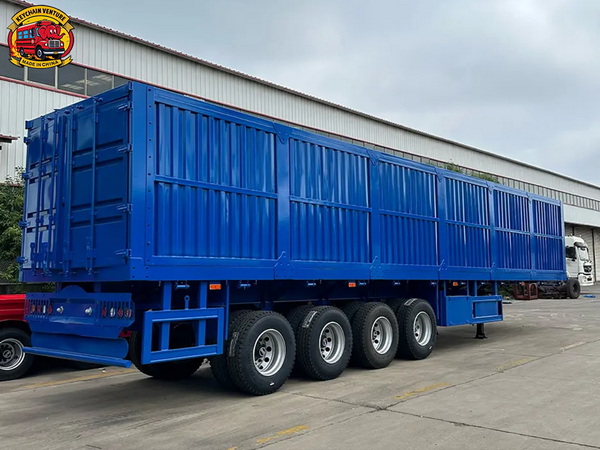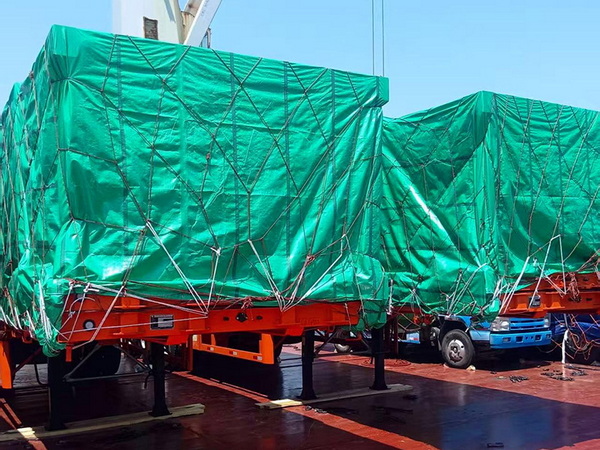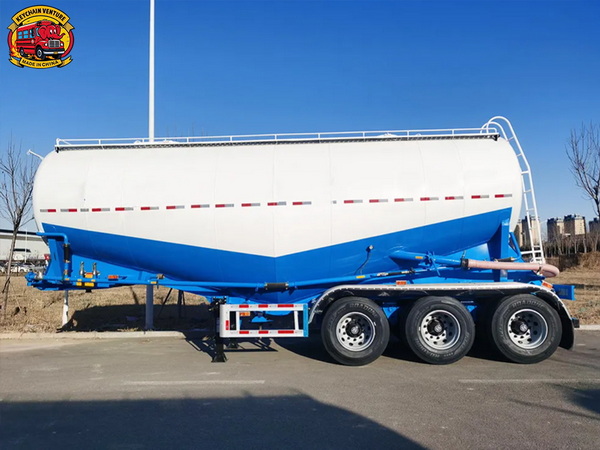Views: 222 Author: Amanda Publish Time: 2025-11-06 Origin: Site








Content Menu
● The Anatomy of a Semi Trailer
● Loading Strategies for Maximum Efficiency
● Trailer Types and Their Impact on Cardboard Transport
● Capacity Calculations for Real-World Scenarios
● Environmental and Economic Considerations
● Frequently Asked Questions (FAQ)
>> 1. How many standard commercial bales fit in a 53-foot trailer?
>> 2. What factors most influence trailer capacity for cardboard bales?
>> 3. Do curtain side trailers improve loading speed for baled cardboard?
>> 4. How should one calculate the number of bales for a given trailer?
>> 5. What safety practices are essential when loading baled cardboard?
Cardboard logistics is a critical facet of modern recycling and supply-chain efficiency. For operators, shippers, and facility managers, understanding how many bales can fit into asemi trailer informs loading plans, fuel economy, and overall throughput. This article unpacks the factors that determine trailer capacity for baled cardboard, including bale dimensions, trailer types, weight limits, loading strategies, and practical tips drawn from industry practice. By examining both volume and weight considerations, readers gain a comprehensive view of how to maximize space while staying compliant with regulations and safety standards. This discussion also highlights trends in trailer design and the economics of large-volume cardboard transport, making it relevant for both domestic and international logistics contexts. The content emphasizes frequent real-world scenarios faced by KeyChain Venture Co., Ltd., a leading commercial vehicle supplier, and offers actionable guidance for optimizing operations in the field.

Semi trailers come in multiple configurations, each optimized for different cargo profiles. The typical 53-foot dry van remains a workhorse for many carton and packaging loads, but alternative designs address specific needs such as bulkier baled materials or irregular dimensions.
- Dry van trailers: Enclosed and weather-protected, commonly used for packaged goods, including baled cardboard where weather exposure must be avoided.
- Flatbed trailers: Open-deck designs ideal for oversized or non-standard bales, enabling easy access from the sides or top.
- Curtain side trailers: Enclosed with flexible side panels, merging protection with rapid side-loading capability, often beneficial for time-sensitive loading of palletized or compacted goods.
- Refrigerated trailers: Specialized for temperature-controlled shipments, less common for baled cardboard unless combined with insulation or cold-chain requirements, but sometimes used for mixed loads in multi-commodity operations.
Understanding the interior dimensions and internal clearance is essential. Typical interior heights vary by model and manufacturer, but common practice emphasizes maximizing cubic space while maintaining safe loading limits and allowing room for securing devices, dunnage, and access for inspection.
Cardboard is baled to optimize density and handling efficiency. Bale size and weight influence how many bales fit inside a trailer.
- Small bales: Approximately 3 ft × 2 ft × 2 ft, around 70 lbs if compressed lightly; denser packing can alter weight.
- Medium bales: Approximately 4 ft × 2 ft × 2 ft, around 100 lbs depending on compression and material.
- Large bales: Approximately 5 ft × 3 ft × 3 ft, around 200 lbs depending on material and compression.
- Standard commercial bales: Heavier and denser, typically in the 900–1200 lbs range after compression, designed for maximum payload per bale while maintaining manageable dimensions for handling.
The exact weights and volumes can vary by supplier, bale grade, and regional recycling standards. In practice, many recyclers standardize on bale specifications that balance compactness with safe handling and secure stacking.
Calculating trailer capacity involves both space (volume) and legal weight (mass) limits. Volume determines how many bales can physically occupy the interior, while weight limits govern how many bales can be transported at once.
1. Trailer volume approximation for a sealed, unobstructed 53-foot trailer: Internal approximations commonly cited: around 4,000 to 4,200 cubic feet, depending on wall thickness, wheel wells, and interior fixtures.
2. Bale volumes:
- Small: 12 cubic feet
- Medium: 16 cubic feet
- Large: 45 cubic feet
- Standard commercial bale: varies significantly with density but often treated as a compact mass rather than a fixed geometric volume for planning purposes.
3. Weight considerations:
- Maximum gross vehicle weight (GVW) on many North American roadways often hovers around 80,000 pounds gross vehicle weight, with individual tractors and trailers carrying up to 40,000–45,000 pounds of cargo depending on axle configuration and jurisdiction.
- Cardboard bale weights commonly range from roughly 900 pounds to 1,200 pounds for standard commercial bales, depending on compression and moisture content.
4. Practical loading range:
- For non-specialized dry van configurations, a widely observed practical range is 36–39 standard commercial bales per 53-foot trailer, balancing space, weight, and securing requirements.
- For smaller bales, the interior could accommodate higher counts from a pure volume perspective, but weight constraints typically limit the number to a similar ballpark when fully loaded.
These numbers are influenced by regional regulations, trailer construction, and the need for safe stacking and secure load containment.
Effective loading is about more than simply filling the interior. It requires planning to maximize space while ensuring stability, accessibility, and compliance.
- Interlocking or staggered patterns distribute weight and reduce shifting during transit.
- Alternating orientations (e.g., long sides oriented along the trailer length) can optimize both stability and access.
- Straps, nets, corner posts, and loadbars are used to secure bales and prevent movement in transit.
- Bulkheads and wall channels can help maintain structure and prevent bale loss in transit.
- Utilizing vertical stacking height as permitted by interior clearance and weight limits increases payload without increasing length.
- Leaving space for load equipment and access points is essential for efficient offloading at destination.
- Flatbeds and curtain sides may offer advantages for unusually shaped or oversized bales, enabling faster loading and unloading when standard enclosed trailers are not ideal.

Different trailer designs influence how many bales can be transported safely and efficiently.
- Dry van: A common choice for standard baled cardboard; provides protection from weather and theft, with typical interior height and width influencing the number of bales that can be stacked.
- Curtain side: Offers quicker access for loading and unloading from the side, which can improve cycle times in facilities with side-loading capabilities.
- Flatbed: Useful for non-standard bale dimensions or when oversized bales must be accommodated; requires robust securing systems due to potential wind exposure and lack of enclosure.
- Refrigerated: Rarely used for cardboard unless combined with other cargo types; however, in some multi-compartment loads, refrigerated trailers may be used to preserve finished products and packaging materials in parallel shipments.
The choice of trailer depends on operational requirements, access at loading docks, and the need to protect baled cardboard from moisture and contamination.
In practice, capacity calculations must reflect both the physical interior and the legal-vehicle constraints. Consider a typical real-world example:
- A standard 53-foot dry van with an interior height of roughly 8.0–8.5 feet and a width around 8.2–8.5 feet provides ample space for dense packing of bales.
- When loading standard commercial bales at 900–1200 pounds, careful stacking with attention to weight distribution typically yields a practical range of 36–39 bales per trailer. This aligns with common industry practice and ensures compliance with weight limits and secure loading standards.
- If bale dimensions shift to smaller or larger sizes, recalculate using volume and weight considerations to determine the new capacity. For instance, a higher proportion of small bales increases the total count but may impact securing patterns and loading time.
Key metrics to monitor during loading:
- Payload weight per trailer and axle weight distribution to comply with gross and axle limits.
- Total cubic utilization (percentage of interior volume converted into bale volume) to gauge efficiency.
- Time per load cycle, including securing and inspection, to optimize throughput.
These calculations are essential for planning routes, scheduling pickups, and reducing the number of trips required to move a given quantity of cardboard.
Efficient use of semi trailers for cardboard transport reduces overall fleet costs and environmental impact. Fewer trips translate to lower fuel consumption and reduced emissions, contributing to sustainability goals. The economics of Bale-based cardboard transport also influence procurement and recycling operations, as optimized trailer utilization lowers unit transport cost and increases supply chain resilience.
- Fuel efficiency gains come from higher payloads per trip and fewer trips required for the same tonnage.
- Recycling networks benefit from predictable and scalable transportation capacity, enabling better scheduling and processing capacity.
- Operational costs include maintenance, fuel, insurance, and compliance with weight and dimension regulations.
Advances in trailer design—such as higher payload ratings and improved securing systems—further enhance the efficiency of baled cardboard transport, making it easier to achieve optimal load factors even as bale sizes and regional regulations evolve.
Maximizing the cargo capacity of a semi trailer for baled cardboard hinges on aligning bale dimensions, interior trailer geometry, securing methods, and legal constraints. In typical configurations, a 53-foot trailer accommodates about 36–39 standard commercial bales, balancing efficient space use with safe and compliant transport. Advances in trailer design and loading practices continue to improve the efficiency of cardboard transport within recycling and logistics networks, delivering tangible benefits in fleet productivity, cost containment, and environmental performance. By applying systematic loading strategies and adhering to industry best practices, operators can achieve reliable, high-volume cardboard distribution across domestic and international routes.

Typically 36–39 standard commercial bales can fit in a 53-foot trailer, depending on bale weight and internal trailer dimensions such as height and width.[11][12][13]
Bale size and weight, trailer type and interior dimensions, stacking pattern, securing method, and legal weight limits all influence capacity.[14][15]
Yes, curtain side trailers allow faster side-loading and unloading, improving cycle times in operations with suitable dock access.[14]
Compute using the trailer's usable interior volume and the bale's volume, then verify the weight does not exceed legal limits for the vehicle and route.[15][16]
Key practices include proper stacking, securement with straps or nets, even weight distribution, routine inspection of securing equipment, and adherence to axle and gross weight limits.[15]
[1](https://www.transwest.com/trailers/blog/semi-trailer-dimensions-length-and-what-can-you-haul/)
[2](https://www.sunhunk.com/about/groupnews-detail-547.htm)
[3](https://www.gw-world.com/us/tools/freight-forwarding-and-logistics/truck-trailer-types)
[4](https://schneiderjobs.com/blog/semi-truck-trailer-dimensions)
[5](https://streamlogistics.com/trailer-dimensions/)
[6](https://www.goodloading.com/en/blog/truck-transport/dimensions-and-types-of-semi-trailers/)
[7](https://equipmentexpertsinc.com/semi-truck-length-a-guide-to-truck-and-trailer-dimensions/)
[8](https://www.pandamech.com/product/3-axle-40-foot-flatbed-semi-trailer/)
[9](https://haletrailer.com/blog/dimensions-53-trailer/)
[10](https://en.wikipedia.org/wiki/Semi-trailer_truck)
[11](https://www.midamericapaper.com/mapr-blog-light-load-charges)
[12](https://isustainrecycling.com/blog/post/cardboard-baling-or-bundling)
[13](https://millerrecycling.com/bundling-compacting-baling-cardboard/)
[14](https://www.dsv.com/en/our-solutions/modes-of-transport/road-transport/trailer-sizes/curtain-trailer)
[15](https://midwest-fiber.com/wp-content/uploads/2021/11/TrailerLoadingGuideAndContainers.pdf)
[16](https://semitrailer.by/how-many-cardboard-bales-can-fit-on-a-flatbed-trailer-a-comprehensive-guide/)